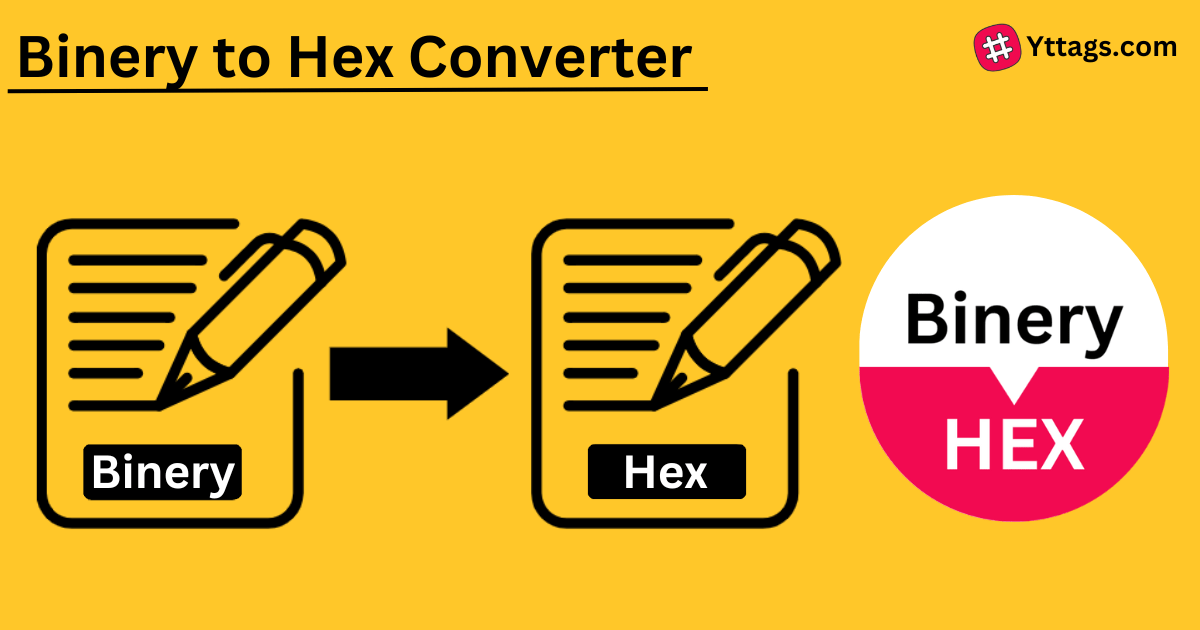Binary to Hexadecimal converter
This binary to hex converter is a quick and easy way to convert a binary number into a hexadecimal number. Binary to hexadecimal conversion can be done using this tool.

If you use this great tool then please comment and/or like this page.
Average Rating: Tool Views: 380
Average Rating: Tool Views: 380
Subscribe for Latest Tools
How to use this Binary to Hexadecimal converter Tool?
How to use Yttags's Binary to Hexadecimal converter?
- Step 1: Select the Tool

- Step 2: Enter Binary Text And Click On Convert Button

- Step 3: Check Your Binary to Hexadecimal converter Result

Binary to hex converter helps you convert binary to hexadecimal numbers instantly. Just enter the binary code and click convert to get accurate hex values.
If you want to link to Binary To Hex page, please use the codes provided below!

FAQs for Binary to Hexadecimal converter
What is a Binary to Hexadecimal converter?
A Binary to Hexadecimal Converter is a tool that converts binary (base-2) numbers into their corresponding hexadecimal (base-16) representations, assisting in the conversion between different numerical bases.
Why do we need to convert binary to hexadecimal?
The choice of hexadecimal representation is taken because of human readability and ease of conversion. This also works the other way round so its much easier for big binary numbers (that appear in memory addresses) to convert them into hex and manipulate them with this representations.
How do you convert binary to hexadecimal directly?
First add two leading zeros so that you have enough digits to split into equal 4 bit sections: (00)100101. Now split into two equal 4 bit sections (0010)(0101). Convert each four bit section into their respective hex values: 0010 = 2; 0101 = 5; (0010)(0101) = (2)(5) = 25(hex).
Why does hexadecimal convert easily to binary?
Converting between hex and binary is easy, because each digit of a hexadecimal number "maps" to four bits (a bit being an individual binary digit) of a binary value. So a byte -- eight binary digits -- can always be represented by two hexadecimal digits.
How is hexadecimal different from binary?
Binary and Hexadecimal number systems are examples of positional number systems with different bases. Binary number systems use a base of two while hexadecimal uses a base of 16. In a hexadecimal system, it is necessary to count to 15. To represent the numbers 10 – 15, the letters A – F are used respectively.